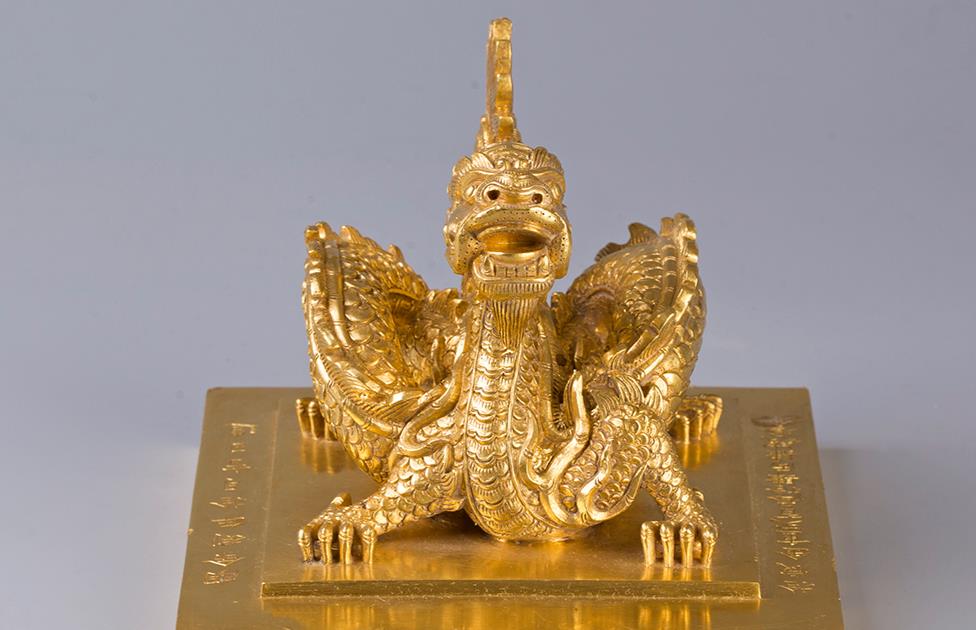The chairman of the Tho Xuan-Yen Dinh Historical Science Association, Mr. Hoang Dinh Hung, stated that the Le Hoan Temple is located in Trung Lap hamlet, which is hundreds of years old and where the founder of the pre-Le Dynasty, Le Dai Hanh, was born.
At the end of the village, there's a royal temple (Le Hoan temple), one of the oldest temples in Thanh Hoa and a rare national historical relic recognized by the government.
Le Hoan, according to historical sources, was born on July 15, 941 in Ke Sop, Di Phong Chau Ai district (now Trung Lap village, Xuan Lap commune, Tho Xuan district in Thanh Hoa province) to a poor farmer family. Le Mich was the father, while Dang Thi was the mother.
After his birth parents died when he was six years old, Le Hoan was adopted by Mr Le Dot in Ke Mia site (now Phong My village, Truong Xuan commune, Tho Xuan district, Thanh Hoa). Growing up, Le Hoan enlisted in the army to aid Dinh Tien Hoang in quelling the anarchy of 12 warlords. He achieved much and was given the rank of Thap Dao General as a result. He helped King Dinh build a peaceful nation.
King Dinh Tien Hoang and his eldest son, Nam Viet Vuong Dinh Lien, were assassinated by Do Thich in the winter of October 979. Le Hoan was designated as a regent, helping the Dinh dynasty keep the border in peace, and suppress internal unrest. He then was bestowed the Royal robe by Empress Dowager Duong Van Nga.
Thien Phuc was the name given to the era after Le Hoan's accession to the throne in 980. After defeating the Tong army, gaining control of Champa, and minting Thien Phu coins, King Nguyen Phuong affirmed the nation's sovereignty, focusing on the growth of agriculture, handicrafts, transportation and commerce.
Hoa Lu, the ancient capital of Ninh Binh, was the final resting place of King Le Hoan, who passed away on March 8, 1005. People constructed a shrine on the area where he lived after his death to honor his achievements.
Jade plate, chopsticks
According to Hoang Dinh Hung, the temple has undergone several restorations throughout the years, yet it still retains its original design. While the temple's carved and embossed murals demonstrate the ancients' great regard for aesthetics, its roof was constructed in the style of an ancient Muong Vietnamese temple. This provides a strong link between the temple and its surrounding landscape.
Inscriptions, ordinations, kings' commands, couplets, altars, sculptures and pottery from the Ly, Tran, and Minh dynasties, as well as the king's poison-test chopsticks and a stone plate reported to have been handed to the Le King by the Tong king are all preserved at the temple.
Seals from both nations appear on the jade plate. “Jiangnan white stone, honed to keep for ten thousand years” was written in two lines in the center of this dish.
These artifacts, according to Mr. Hung, were once housed in the temple. The transparent plate is put on the altar, and it shines at night. Because the locals are unaware of its significance, they have allowed incense ash to accumulate on the plate, which has become gray over time.
A special case decorated with intricate designs contains the King's cutlery used to test for poison. Every time the King consumed food, the courtiers used a pair of chopsticks to pick up the meal first. If there was poison, they would quickly turn black.
According to Mr. Hung, there was a boom in antiquity hunting around 20 years ago, and people went to Le Hoan temple to steal things. Locals had no choice but to acquire safes and move the valuables to people's homes in order to deal with the problem.
“Many scientists, historians and researchers have been here to learn about these objects. There is still no conclusive answer as to what the chopsticks are composed of or how the jade plate was manufactured. The jade plate and chopsticks of the monarch are seen as treasures by locals,” said Mr. Hung.
 |
| Le Hoan Temple is considered the oldest temple in Thanh Hoa. |
 |
| The temple's cultural significance has endured over time. |
 |
| The treasured jade plate. |
 |
| The King's poison-test chopsticks. |
 |
| This set of items is carefully stored. |
 |
 |
 |
| There are many antiques housed in the temple. |
Le Duong

New national treasures: King Minh Mang's roughly 9kg gold seal
In 1945, the Nguyen Dynasty gave King Minh Mang’s priceless golden seal (aka Imperial Seal Ton Than chi bao) to the Government.

Nhat Tao Bell a valuable antique
Nhat Tao Bell, housed at Nhat Tao temple in Hanoi, is the sole antique made in the 10th century whose unique shape is different from others in pagodas and temples in Vietnam.

Stone grinder collection tells part of Vietnamese culture
Hundreds of old stone mortars, millstones and grinders, of different sizes and shapes, are on display at a private museum in the mountainous district of Yen The in the northern province of Bac Giang.